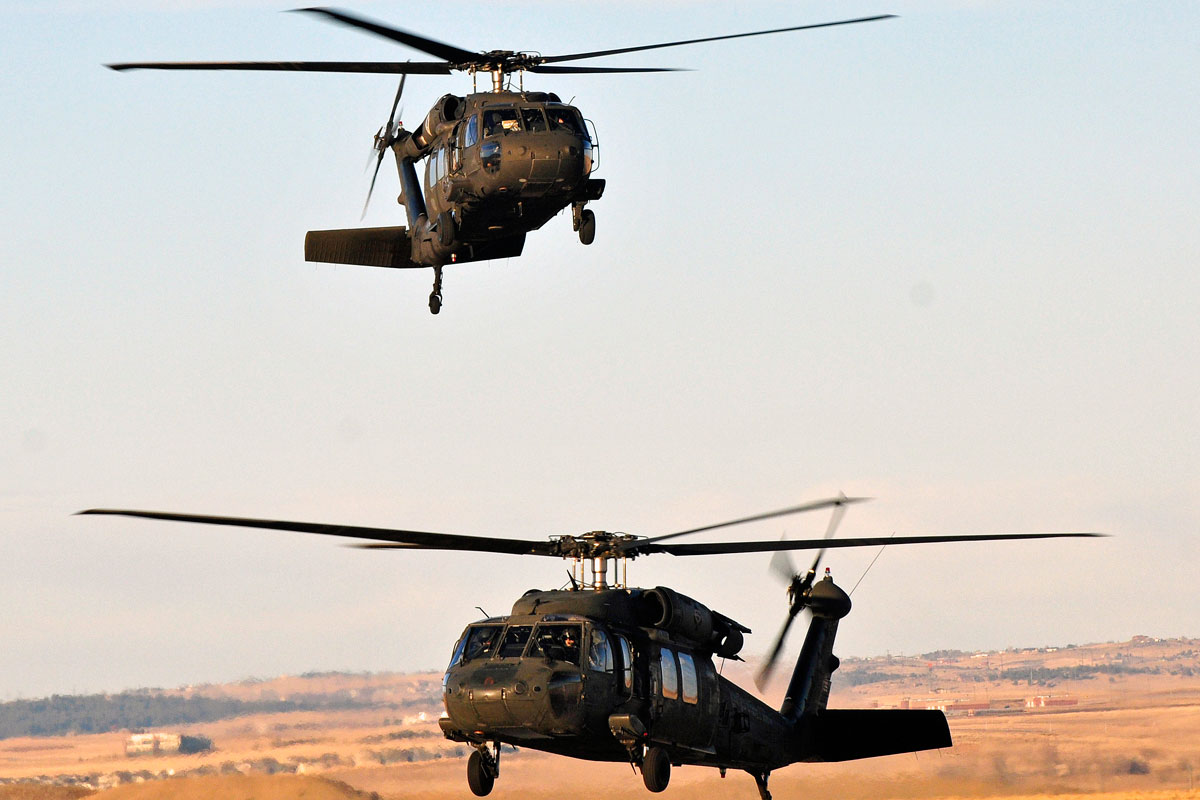UH 60 Helicopter Upkeep: A Comprehensive Guide for Pilots
UH 60 Helicopter Upkeep: A Comprehensive Guide for Pilots
Blog Article
Browsing Uh 60 Helicopter Regulations and Conformity Needs

Regulatory Framework Review
The governing structure regulating UH-60 helicopter operations encompasses a facility collection of criteria and policies established by aeronautics authorities. These guidelines are developed to ensure the secure and effective operation of UH-60 helicopters in numerous atmospheres. The Federal Aeronautics Management (FAA) plays a central duty in developing and imposing these laws, which cover a large range of operational facets, including airworthiness criteria, pilot certifications, maintenance needs, and operational treatments.
Compliance with these regulations is necessary for helicopter operators to keep the highest degree of security and operational stability. Failure to stick to these regulations can cause major effects, including crashes, injuries, and regulatory permissions. Helicopter drivers have to stay notified concerning the newest governing growths and guarantee that their procedures are in complete conformity with all appropriate policies and standards.
Airworthiness Evaluations and instructions
In the middle of the regulatory framework controling UH-60 helicopter operations, a crucial focus exists on compliance with Airworthiness Directives and conducting detailed evaluations to maintain safety and security requirements and operational integrity. Airworthiness Instructions (Advertisements) are provided by air travel authorities to deal with harmful problems in airplane, consisting of the UH-60 helicopter, and required details actions to be taken by operators or owners. Conformity with ADs is required, and failure to follow these instructions can cause severe repercussions, including grounding of the aircraft.
Regular inspections are extremely important to making certain the airworthiness of UH-60 helicopters. These assessments include a series of checks, from regular everyday evaluations conducted by pilots prior to and after flights to more thorough arranged maintenance examinations brought out by certified technicians. Furthermore, special assessments may be called for based on specific problems or occurrences. By sticking to a strict examination program, drivers can spot and address potential problems promptly, consequently enhancing the safety and security and reliability of UH-60 helicopter procedures.
Pilot Qualifications and Training

Pilot training for UH-60 helicopters is thorough and covers a wide variety of subjects, including airplane systems, emergency treatments, navigating, and mission-specific training. Furthermore, pilots undergo view it simulator training to exercise various emergency circumstances in a controlled environment. This training assists pilots create the required abilities to deal with tough situations successfully.


In addition, recurring training and expert advancement are vital for UH-60 pilots to stay current with the most recent laws, modern technology, and finest practices. By investing in pilot credentials and training, drivers can enhance safety, maximize performance, and guarantee conformity with governing demands in the operation of UH-60 helicopters.
Functional Limitations and Demands
Pilot qualifications and training function as the structure for comprehending the operational constraints and needs linked with UH-60 helicopter procedures (uh 60). These operational constraints are established to guarantee the safety of the team, passengers, and the airplane itself. Operational constraints may consist of aspects such as weather, weight restrictions, elevation constraints, and functional boundaries. It is critical for pilots to be skilled in these limitations to make educated choices during trip operations. Furthermore, compliance demands, such as sticking to particular trip paths, communication methods, and emergency treatments, are essential for preserving functional safety and regulative conformity. Pilots should remain existing with all operational restrictions and needs through routine training, instructions, and reviews to alleviate threats and ensure risk-free and reliable UH-60 helicopter operations. By focusing on adherence to these functional guidelines, pilots can enhance the general safety and security and effectiveness of their missions while maintaining governing criteria.
Emergency Situation Treatments and Conformity Testing
Effective emergency treatments and detailed conformity screening are vital elements of maintaining operational safety and security and governing adherence in UH-60 helicopter procedures. Emergency procedures incorporate procedures for different scenarios, consisting of engine failings, fires, hydraulic problems, and more. Pilots and staff participants should be well-versed in these treatments to react swiftly and effectively in emergency situations. Routine compliance screening guarantees that the helicopter meets all governing demands set forth by aeronautics authorities. This testing involves detailed examinations, checks, and examinations to confirm that the airplane is airworthy and in compliance with all relevant guidelines.
Compliance testing additionally encompasses tools onboard the UH-60, such as communication systems, navigation tools, and safety gear. Making certain that all equipment is operating correctly and satisfies governing standards is vital for secure operations. Furthermore, conformity screening may include simulations of emergency situation scenarios to evaluate the team's feedback and the helicopter's performance under tension. By this contact form focusing on emergency situation procedures and compliance screening, UH-60 drivers can mitigate risks and show their commitment to safety and security find out this here and governing conformity.
Verdict
To conclude, adherence to governing structure, conformity with airworthiness instructions, pilot credentials and training, functional constraints, and emergency situation treatments are crucial for browsing the guidelines and demands of running a UH-60 helicopter. uh 60. It is critical for drivers to focus on security and make sure full compliance with all applicable regulations to keep the airworthiness and functional stability of the aircraft
Navigating the governing landscape bordering UH-60 helicopter operations demands a nuanced understanding of the intricate internet of policies and compliance requirements.Conformity with these guidelines is vital for helicopter operators to maintain the highest possible degrees of safety and functional stability.In the middle of the regulatory structure regulating UH-60 helicopter operations, a critical emphasis lies on conformity with Airworthiness Directives and carrying out extensive evaluations to promote security standards and functional dependability.Effective emergency situation procedures and detailed compliance screening are important components of keeping operational safety and security and regulative adherence in UH-60 helicopter operations. Routine conformity testing makes certain that the helicopter satisfies all governing demands established forth by air travel authorities.
Report this page